"My name is Thatcher Unfried. I have grown up in a family that thinks building boats is normal.”
Thatcher is a 14-year-old eighth grader who lives in Redding, Connecticut, with his parents, brother, and sister. Even before the kids were born, his parents built a canoe in the living room, so they were all indoctrinated in the precepts of boatbuilding at an early age. As an infant, Thatcher slept in a small boat built to be his cradle, and at one year old he was in the garage shop with his father working on an Arctic Hawk plywood kayak.
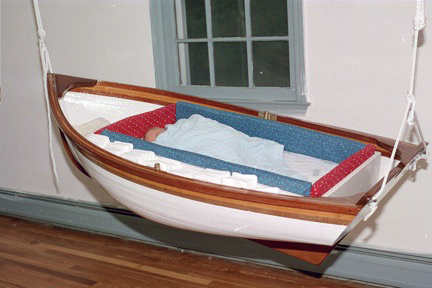 All photographs by Ken Unfried
All photographs by Ken UnfriedThatcher, catching some shuteye here, was introduced to wooden boats at an early age, beginning with this cradle boat built by his father, Ken.
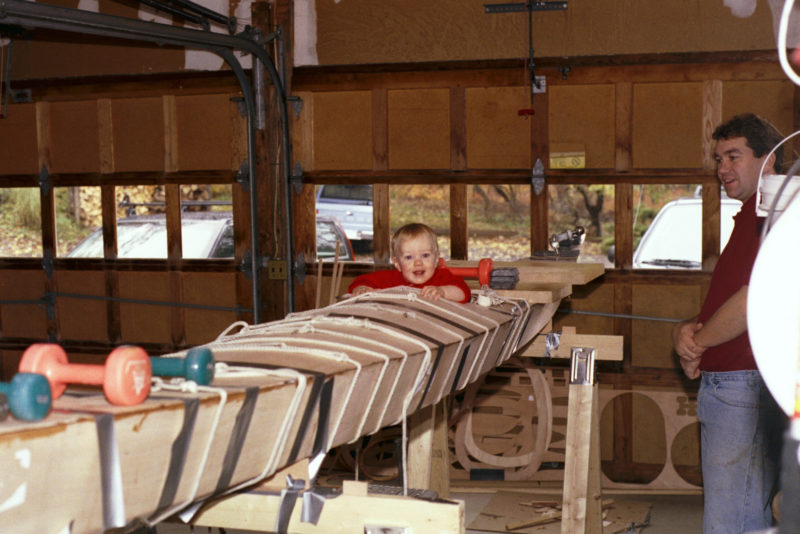
A young Thatcher gave his dad a hand during the construction of a stitch-and-glue kayak kit. The Unfried family, as all normal families do, use the garage for boats and leave their cars outside.
Thatcher is the youngest of three children and wasn’t alone in his inclination to build a boat. His sister had a strip-built Night Heron kayak to her credit, and his brother had built a stitch-and-glue plywood Shearwater 17. Thatcher liked the lines of the Night Heron but preferred the tracking offered by the Shearwater’s hard-chined hull, so he set his sights on a stitch-and-glue version of the Night Heron.
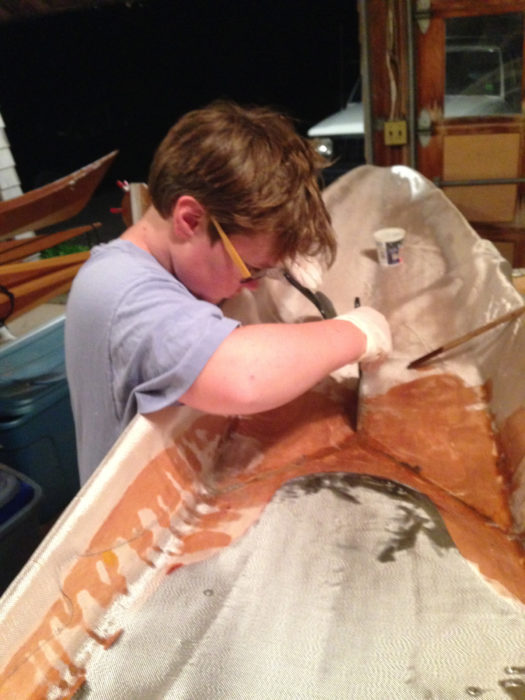
Thatcher was fascinated by the process of ‘glassing the kayak: “It is crazy how the fiberglass disappears into the epoxy. You can’t even see it.”
He was in the fifth grade, just 11 years old, when he started saving money to buy a Night Heron kit from Chesapeake Light Craft. His father agreed to help pay for the kit if Thatcher would kick in $100. His allowance was $2 per week, so he went without indulgences for an entire year to save his share of the cost.
The kit for the Nick Schade–designed kayak arrived as Thatcher was finishing the sixth grade. He had built some boat models, so he had a good sense for how the Night Heron would go together, but the scale and the complexity of the project were greater than he anticipated. That didn’t deter him from adding some extra personal touches. He used some wood dyes to color some of the plywood panels before assembling them. The yellow, red, and blue accents would set his boat apart from the other boats in the family, all finished bright.
Thatcher learned a few lessons along the way. When he lapped the fiberglass covering the deck over the top of the ’glass on the hull, the loose weave of the cut edge made a bit of a mess. “What I would have done differently!” he complained. “The fiberglass fibers at the edge of the fabric got long and stringy and gloppy, and ended up making a big hard mess on the sides of the boat. It took forever to sand it down.”
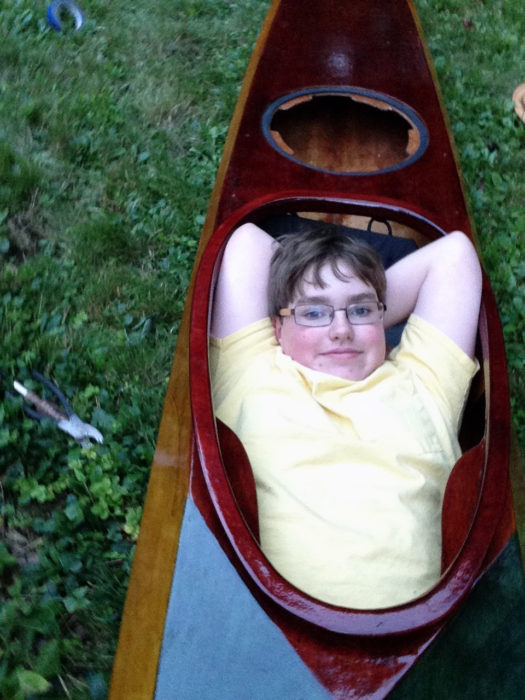
It’s the thought that counts. Casting about for ways to get a nut threaded onto a deck-fitting bolt in the bow, Thatcher took a shot at holding the nut under the foredeck with his toes.
The hardest part of the job was securing the webbing deck fitting at the tip of the bow. “I had to hold it on with a machine screw that had to have a nut on the inside way at the very front where no one could reach,” he said. “I lay down and slid forward and tried to grab it with my toes, but it didn’t work. My arms and shoulders wouldn’t fit. In the end we tried a lot of things but finally got it done using a stick with a hole drilled in it, then the nut hammered into the hole, and another stick wedging it all in place, and the screw going through just right. By that time it was dark and the family was all on the front yard with flashlights trying to get the nut to catch on the threads.”
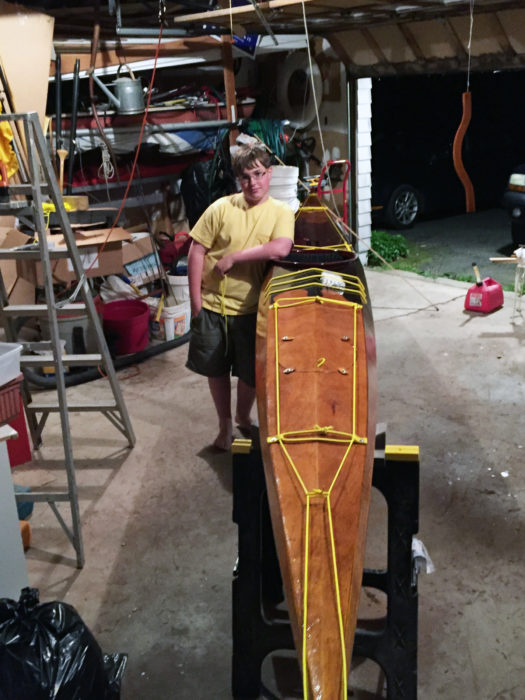
Thatcher named his kayak YELLOW SNAPPER “because she is yellow, fast, and it reminds me of the yellow snapper fish. The fish are fast and beautiful, just like my boat. The bungees make a sharp snapping noise too.”
He worked through the summer and into the school year but took a break over the winter. The unheated garage was too cold for both him and epoxy. He spent about 100 hours building the kayak over the course of a year. He finished it by the end of seventh grade. The project, aside from being its own reward, helped Thatcher earn his Boy Scouts Merit Badge for woodworking, as it met the requirement of creating a “carpentry project.” He is currently ranked as a Star Scout and aspires to be an Eagle Scout.
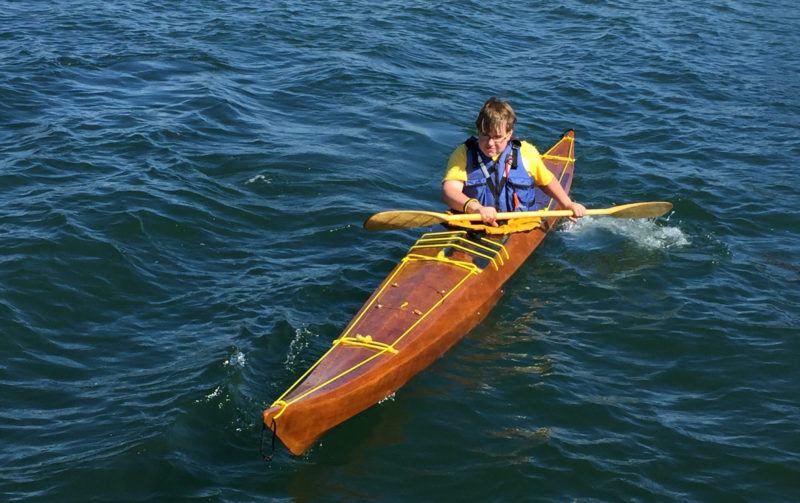
Thatcher has a powerful stroke with good torso rotation, not to mention the game face of a kid with no shortage of determination.
Thatcher christened his kayak YELLOW SNAPPER after he had seen that species of fish during a boating vacation and was impressed by their beauty and speed. Yellow is also his favorite color and was his choice for the deck lines.
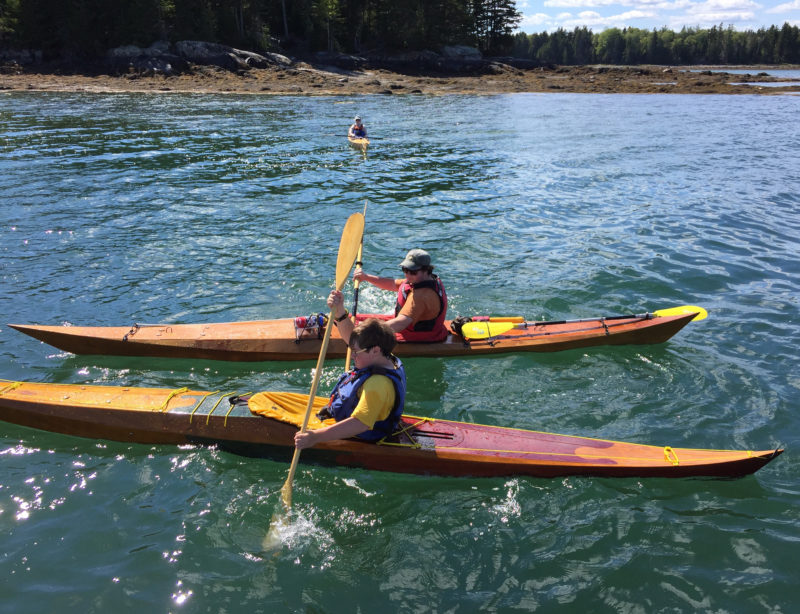
Thatcher, nearest camera, is joined by his brother Ben in a Shearwater 17 and his mother Sarah in an Arctic Hawk.
When Thatcher took his kayak out for the first time on a pond in Huntington State Park, not far from his home, he was joined by a friend who had just bought a plastic kayak. “It’s a Tupperware tuna can,” writes Thatcher, but keeping true to Scout Law by being loyal, friendly, courteous, and kind, he adds, “We don’t make an issue of it because he is a good guy.”![]()
Have you recently launched a boat? Please email us. We’d like to hear about it and share your story with other Small Boats Monthly readers.
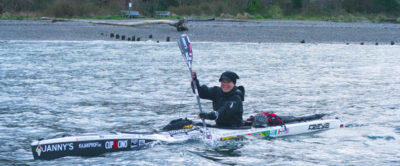
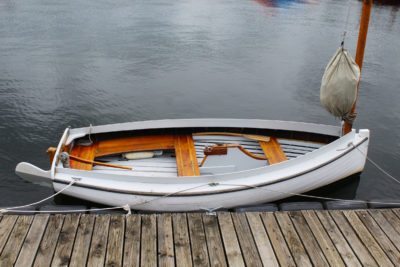
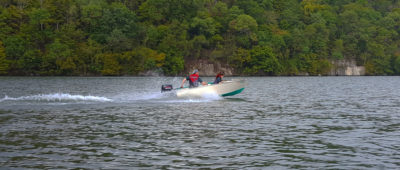

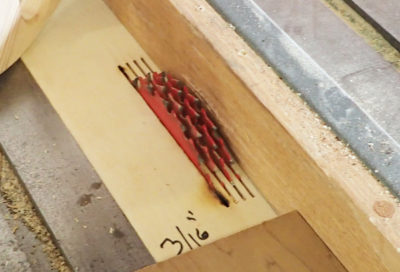
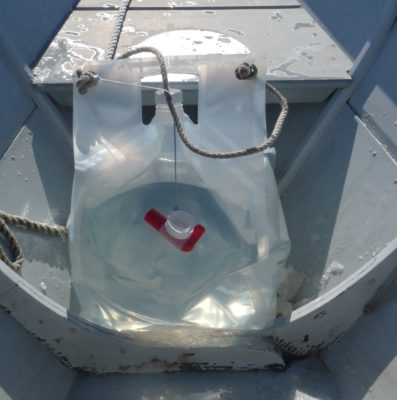
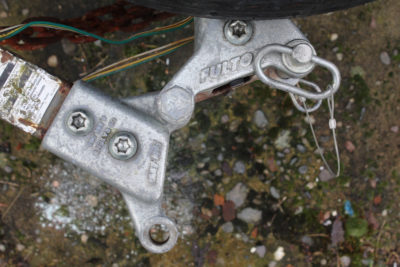
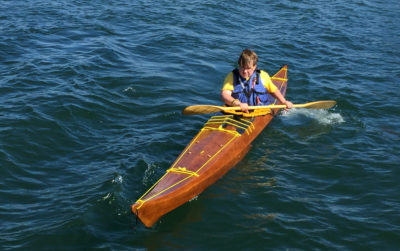

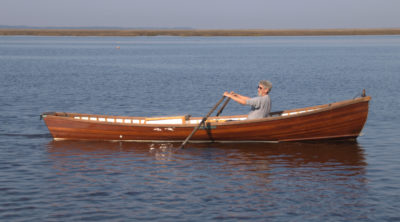
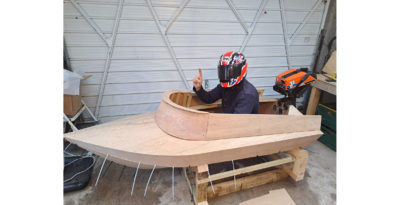
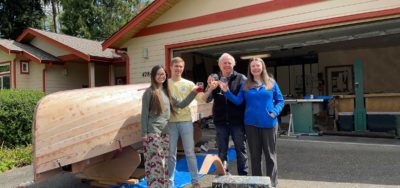
Congratulations, Thatcher. Nice job on your kayak. With dedication like yours you will make Eagle on no time.
Hah, Thatcher, I can’t build them any faster than you did. Great-looking craft and I’m sure you’ll paddle your way to Eagle. P Hendrickson, Eagle ~1961 Troop 504, North Amherst, MA